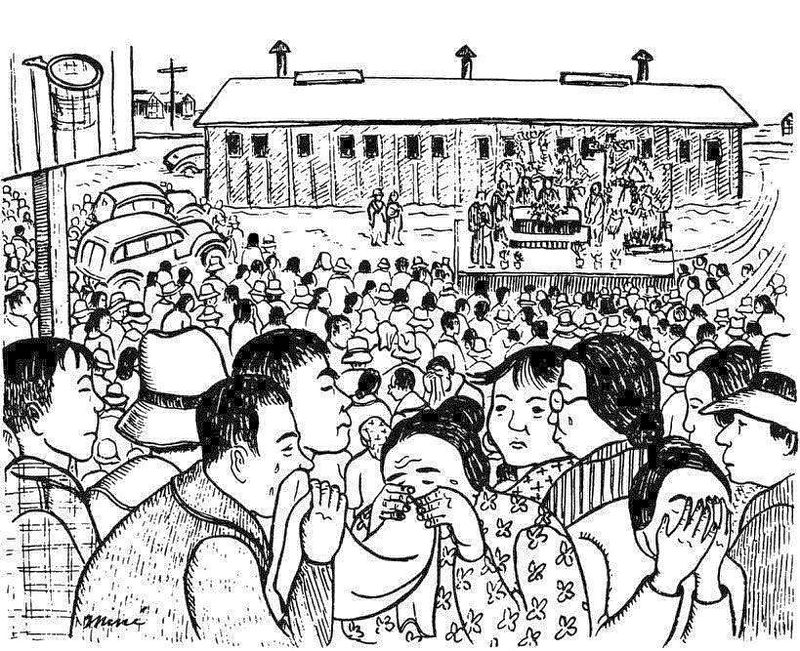Mine Okubo

Miné Okubo was a Japanese-American artist born in Riverside, California, in 1912. She is best known for her 1946 book Citizen 13660, in which she recounts her experience in a Japanese-American internment camp, which was one of the first widely-circulated personal accounts of the repression and indignities faced by over 100,000 Japanese-Americans during World War II, and is considered to this day one of the most affecting pieces about that chapter in American history.
Okubo received her Master’s of Fine Arts from UC Berkeley in 1938 and spent two years traveling in France and Italy developing her skills as an artist. The outbreak of war in Europe forced her to return to the United States, at which point she began working for the Works Progress Administration’s art programs in San Francisco. Following the attack on Pearl Harbor, President Roosevelt’s Executive Order 9066 called for the imprisonment of thousands of Japanese and Japanese-Americans living on the west coast. Okubo and her brother, Toku, were relocated to the internment camp Tanforan, which had been created as a “temporary assembly center” on a horse racing track in San Bruno, California. They were later relocated to the Topaz Camp in Utah, where they lived in harsh conditions with about nine thousand other Japanese-Americans. Okubo documented her experience at the camp in her sketchbook, recording images of the humiliation and everyday struggle of internment.

In time, Fortune magazine learned of her talent and offered her assignments. When the War Relocation Authority began allowing people to leave the camps and relocate to areas away from the Pacific Coast, Mine took the opportunity to move to New York City, where Fortune was located. Upon her arrival, she moved to 17 East 9th Street. It was here that she completed her work on Citizen 13660, named for the number assigned to her family unit, which contains more than two hundred pen and ink sketches. Though she eventually moved into another apartment, she lived in New York for the rest of her life, until 2001 when she died at age 88. Citizen 13660 is considered a classic of American literature and a forerunner of the graphic novel and memoir.
